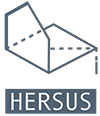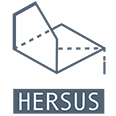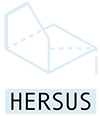Please wait while flipbook is loading. For more related info, FAQs and issues please refer to DearFlip WordPress Flipbook Plugin Help documentation.
Recent decades have witnessed the distinct necessity of introducing aspects of heritage sustainability in the architectural design research, practice, and education and affirming the application of analytical tools such as architectural programming as crucial didactic and methodical instruments in the learning process within the course Design Studio.
This practicum aims at establishing a research design framework within the Design Studio course in the context of inherited values (social, cultural, architectural). The focus is on the application of architectural design principles through diagramming, i.e., on the diagram as a methodological tool for reviewing, understanding, and exploring the complex relations between users and the total context (material and immaterial) to form a creative, consistent connection between the past, present, and future. The central position is reserved for the design process, suggesting that architecture is not regarded as the ultimate goal but as a means of questioning the present and building the future. Thus, a series of broader critical topics are also raised that include urban narratives, the identity, and the economic, ethical, social, and spatial values of urban cultural practices.
This edition of the Practicum, in addition to instructions and presentations of various methods and principles, includes demonstration examples and the results achieved by the first generation of students at the Design Studio under the topic: Reprogramming heritage – a culture of leisure. Studio work was formally and thematically connected with the realization of the HERSUS. Studio activities were directed towards exploring the formats of the culture of leisure and their programmatic articulation into contemporary architectural and urban typologies. Through multiscale and problem-based research, the students investigated architectural programs capable of generating a sustainable technology of everyday life and heritage. The presented examples of student works relate to the reprogramming of heritage within the spatial coverage of the West Gate of Belgrade.
Excerpt from the introductory section
Acknowledgments: The authors would like to thank all the students who participated in the design studio: Sofija Sinobad, Una Obradović, Danica Petrović, Dunja Dedić, Milica Mijajović, Nenad Pavlović, Andrej Jovanović, Katarina Spasojević, Jovana Prijović, Teodora Stevanović, Mihailo Milosavljević and Milica Knežević. Also, authors would like to thank all the reviewers for valuable comments that contributed to the high standard of practicum: Ivan Rašković, Jelena Živković, Konstantinos Sakantamis and Renata Jadrešin Mili


